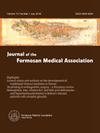Impact of the pulmonary venous entry site morphology on postoperative pulmonary vein stenosis in total anomalous pulmonary venous connection patients
IF 2.5
3区 医学
Q1 MEDICINE, GENERAL & INTERNAL
引用次数: 0
Abstract
Background
To evaluate the association between the pulmonary vein (PV) entry site morphology after total anomalous pulmonary vein repair (TAPVC) and postoperative pulmonary vein stenosis (PVS).
Methods
Computed tomography (CT) examination was performed to determine the PV entry site morphology. The width of the PV confluence was divided by the width of the left atrium (LA) to obtain the cPV/LA index. The cPV/LA index was compared between patients with and without postoperative PVS.
Results
Fifty-one patients who had undergone CT after TAPVC repair were included, with a median cPV/LA index of 0.5 (interquartile range (IQR) = 0.349–0.654). Among them, 27 patients developed postoperative PVS. The median cPV/LA index after primary TAPVC repair was significantly lower in patients with PVS compared to those without PVS (0.367, IQR = 0.308–0.433 vs. 0.657, IQR = 0.571–0.783, P < 0.0001). Additionally, the cPV/LA index after surgical re-intervention for PVS was significantly smaller in patients who developed recurrent stenosis compared to those who remained free-from re-stenosis after surgical relief (0.459, IQR = 0.349–0.556; vs. 0.706, IQR = 0.628–0.810, P = 0.0045).
Conclusion
A small PV confluence width is associated with the development of postoperative PVS and recurrent stenosis after surgical relief of PVS. Our results suggest that adequate bilateral pulmonary vein lateralization during TAPVC surgery is crucial.
肺静脉入口部位形态对全异常肺静脉连接患者术后肺静脉狭窄的影响。
背景:评估全肺静脉异常修补术(TAPVC)后肺静脉(PV)入口部位形态与术后肺静脉狭窄(PVS)之间的关系:方法:通过计算机断层扫描(CT)检查确定肺静脉入口部位的形态。将 PV 汇合处的宽度除以左心房(LA)的宽度,得出 cPV/LA 指数。对术后出现和未出现 PVS 的患者的 cPV/LA 指数进行比较:结果:共纳入了 51 名在 TAPVC 修复术后接受 CT 检查的患者,中位 cPV/LA 指数为 0.5(四分位距 (IQR) = 0.349-0.654)。其中,27 名患者术后出现了 PVS。与无 PVS 的患者相比,有 PVS 的患者在 TAPVC 初级修复术后的中位 cPV/LA 指数明显较低(0.367,IQR = 0.308-0.433 vs. 0.657,IQR = 0.571-0.783, P 结论:PVS 患者的中位 cPV/LA 指数较低:较小的肺静脉汇合宽度与术后发生 PVS 和手术解除 PVS 后复发狭窄有关。我们的研究结果表明,在 TAPVC 手术中进行充分的双侧肺静脉侧切至关重要。
本文章由计算机程序翻译,如有差异,请以英文原文为准。
求助全文
约1分钟内获得全文
求助全文
来源期刊
CiteScore
6.50
自引率
6.20%
发文量
381
审稿时长
57 days
期刊介绍:
Journal of the Formosan Medical Association (JFMA), published continuously since 1902, is an open access international general medical journal of the Formosan Medical Association based in Taipei, Taiwan. It is indexed in Current Contents/ Clinical Medicine, Medline, ciSearch, CAB Abstracts, Embase, SIIC Data Bases, Research Alert, BIOSIS, Biological Abstracts, Scopus and ScienceDirect.
As a general medical journal, research related to clinical practice and research in all fields of medicine and related disciplines are considered for publication. Article types considered include perspectives, reviews, original papers, case reports, brief communications, correspondence and letters to the editor.

 求助内容:
求助内容: 应助结果提醒方式:
应助结果提醒方式:


